In June of 2017, NRAO invited four artists to a conference at New Mexico Institute of Mining and Technology to interpret the four science cases that will drive the design of the ngVLA. Cradle of Life sketches by President of the International Aerospace Imagineering, Aldo Spadoni.
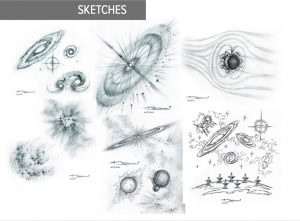
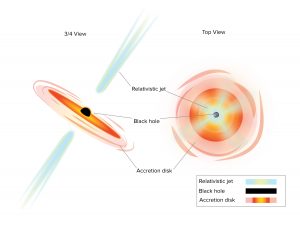
AGNs Seen at Different Angles
One type of active galactic nuclei (AGN) — a supermassive black hole that is gobbling up gas and dust — is called a quasar. Quasars got their name because, when first discovered, they were called “quasi-stellar objects” meaning “star-like.” They are very powerful sources of radiation, sometimes having luminosities thousands of times greater than entire galaxies, but when observed optically they appeared to only be distant faint stars or, in some cases, didn’t appear at all. Nowadays we know these objects are actually the nuclei of galaxies with feeding supermassive black holes at their centers. These supermassive black holes swirl the nearby gas and dust into an accretion disk and often emit jets of particles away at nearly the speed of light. If one of these jets happens to be pointing directly at the Earth we call it a blazar.
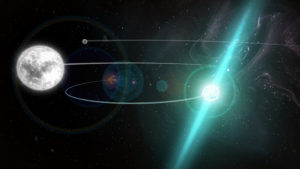
Even Dense Neutron Stars Fall like a Feather
Harnessing the exquisite sensitivity of the National Science Foundation’s Green Bank Telescope (GBT), astronomers have given one of Einstein’s predictions on gravity its most stringent test yet. By precisely tracking the meanderings of three stars in a single system – two white dwarf stars and one ultra-dense neutron star – the researchers determined that even phenomenally compact neutron stars “fall” in the same manner as their less-dense counterparts, an aspect of nature called the “Strong Equivalence Principle.”

Tidal Disruption Event in Arp 299
Artist’s conception of Tidal Disruption Event (TDE) in Arp 299. Powerful gravity of supermassive black hole shreds passing star, pulling material into disk rotating around the black hole, and launching jet of particles outward. Artist’s conception in pullout — background is Hubble Space Telescope image of Arp 299, a pair of colliding galaxies.
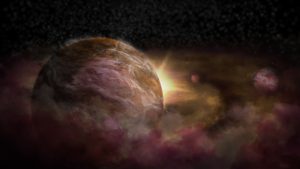
Trio of Infant Planets Discovered around Newborn Star
Two independent teams of astronomers have uncovered convincing evidence that three young planets are in orbit around an infant star known as HD 163296. Using a new planet-finding strategy, the astronomers identified three discrete disturbances in a young star’s gas-filled disk: the strongest evidence yet that newly formed planets are in orbit there. These newly formed planets are depicted here in an artist impression.
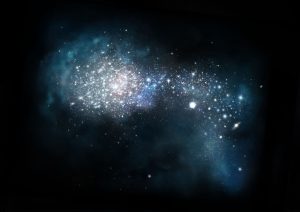
A Young Galaxy
Artist impression of very young galaxy in the early universe.





